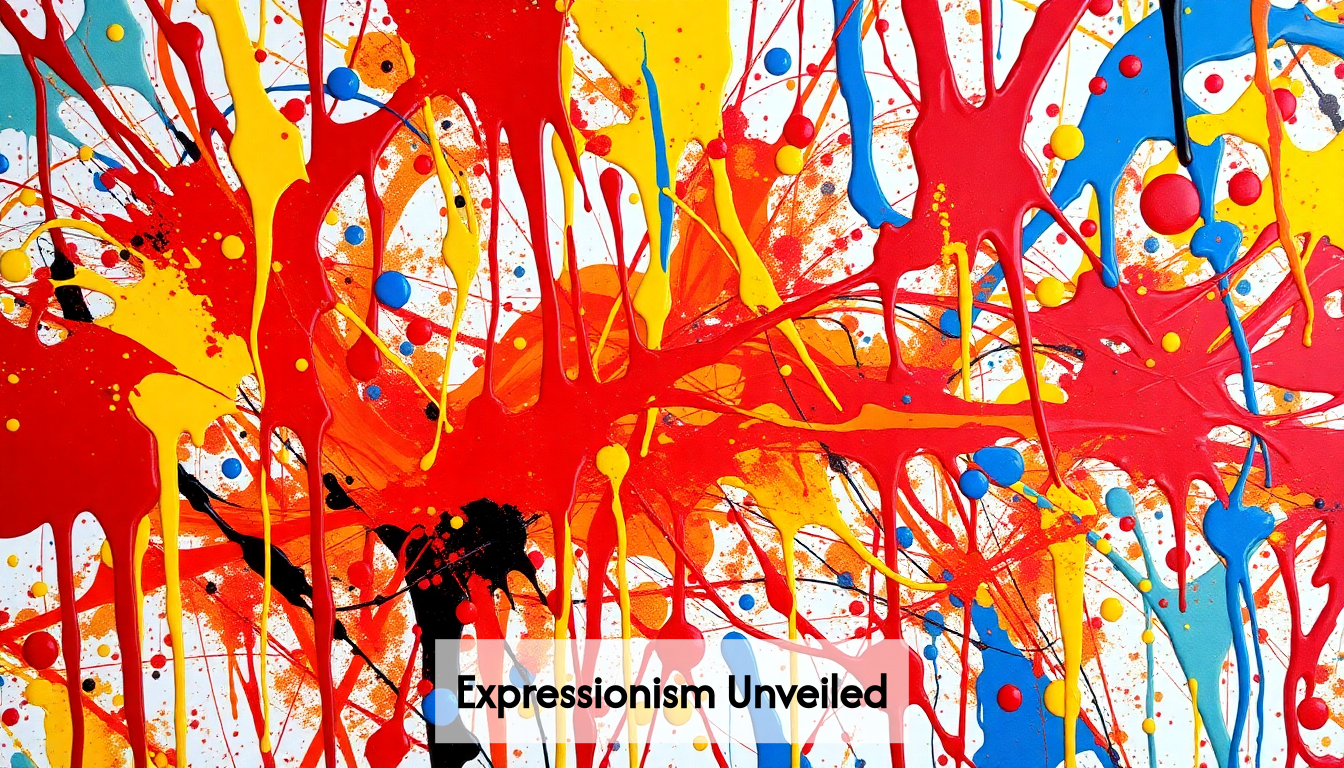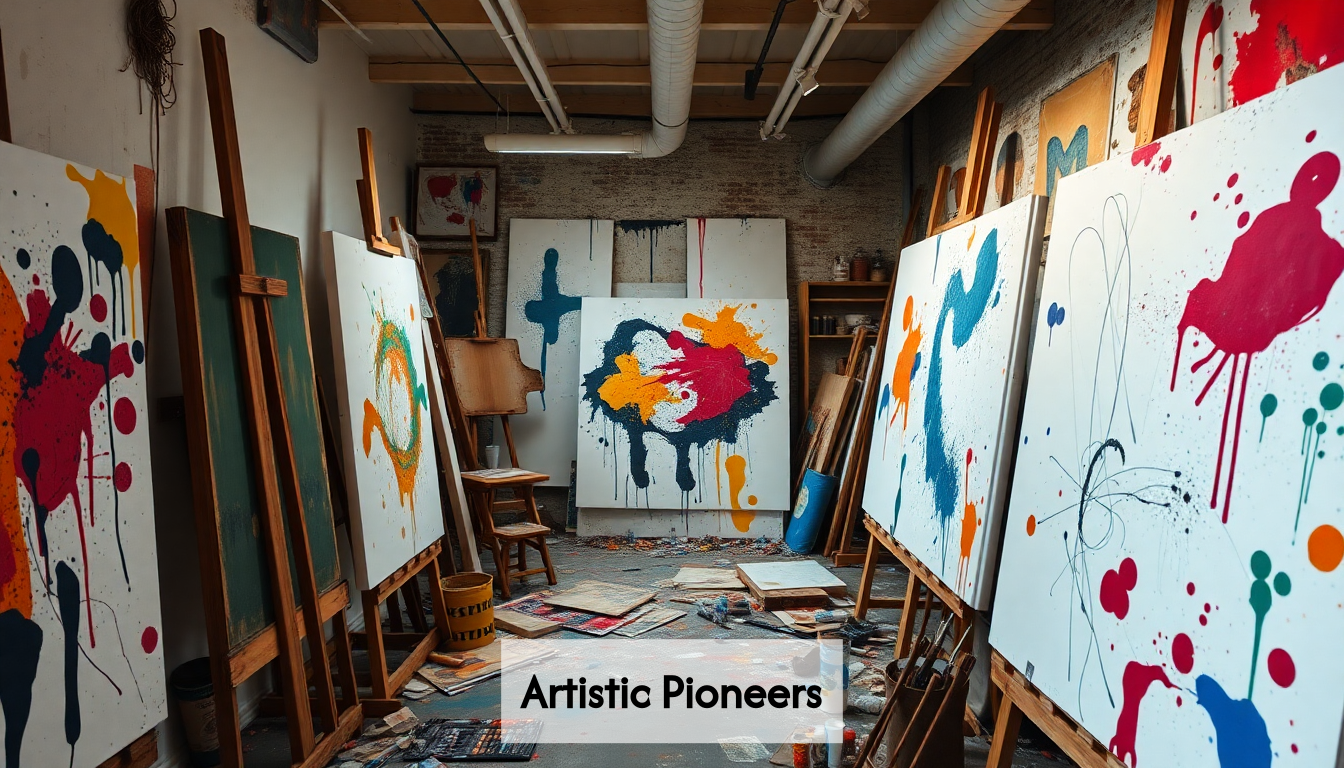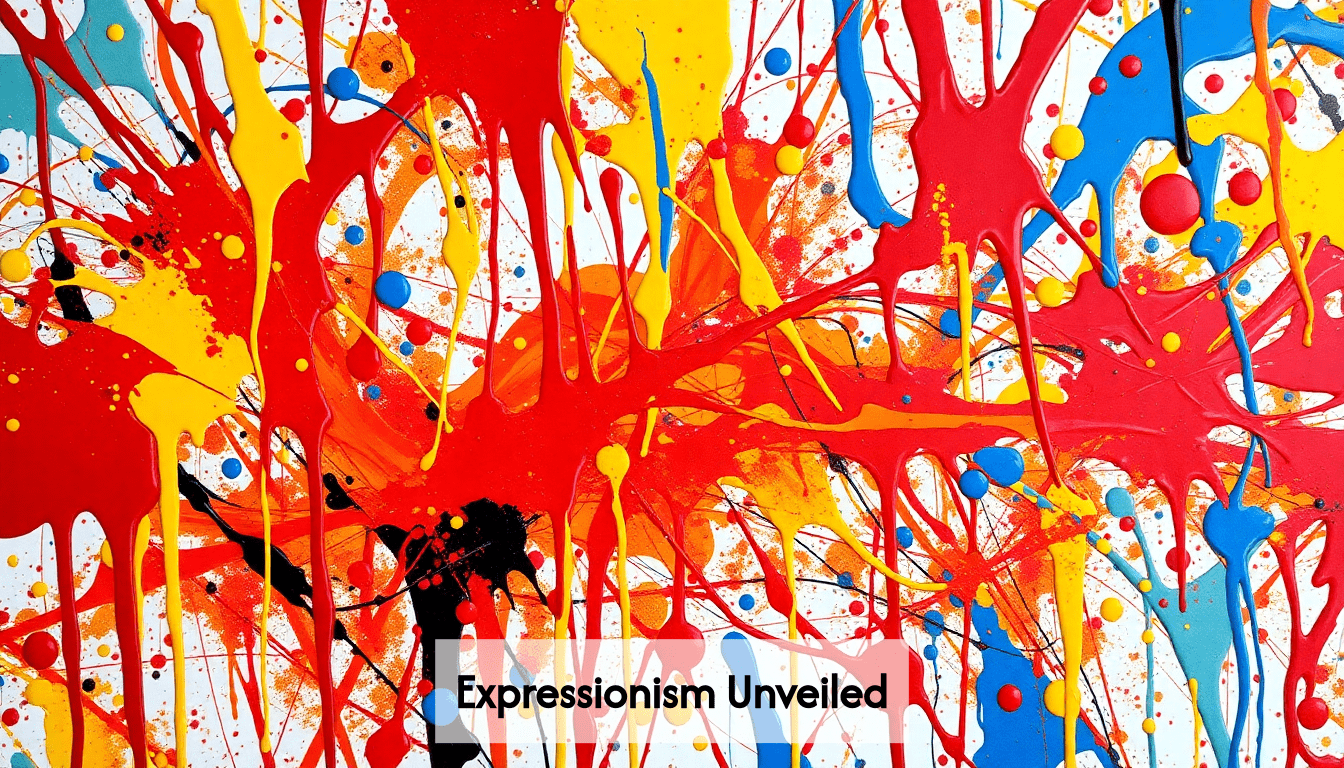
The Origins and Evolution of the Abstract Expressionism Art Movement
Abstract Expressionism emerged as a revolutionary art movement in 1940s New York City, marking a decisive break from European artistic traditions. Born from the cultural and psychological aftermath of World War II, this distinctly American movement reflected the era’s anxieties and the search for new forms of artistic expression.
The movement developed in response to several key influences:
- Surrealism brought by European artists fleeing war-torn Europe
- The social upheaval of the Great Depression and World War II
- The desire to move beyond earlier American styles like Regionalism and Social Realism
- The teachings of European émigré artists like Hans Hoffman
According to art historians at ArtGoda, Abstract Expressionism developed into two primary branches: Action Painting and Color Field Painting. Action Painting, exemplified by Jackson Pollock’s revolutionary drip technique, emphasized the physical act of painting itself as a form of spontaneous self-expression. Meanwhile, Color Field artists like Mark Rothko and Barnett Newman created large expanses of color designed to evoke transcendent emotional responses.

What began as a radical departure from artistic convention quickly evolved into the first internationally recognized American art movement. By the mid-1950s, Abstract Expressionism had transformed from an outsider movement to the dominant artistic force of its era, establishing New York as the new center of the Western art world.
Key Takeaways
| Takeaway | Explanation |
|---|---|
| Emergence from Conflict | Abstract Expressionism was shaped by the cultural and psychological impacts of World War II, providing artists a new medium for expressing anxiety and disillusionment. |
| Branches of Expression | The movement evolved into two main styles, Action Painting concentrating on spontaneous physical expression, and Color Field Painting focusing on emotional responses through color. |
| Shift in Artistic Power | By the mid-1950s, Abstract Expressionism was recognized as the dominant artistic force, notably moving the center of the Western art world from Paris to New York. |
Signature Techniques and Aesthetic Innovations

Abstract Expressionism revolutionized art through groundbreaking techniques that prioritized emotional expression over representation. The movement’s distinctive aesthetic approaches continue to influence artists decades after its peak.
The technical innovations of Abstract Expressionism transformed how artists approached the canvas, with several signature methods defining the movement:
- Drip Painting: Jackson Pollock pioneered this technique by suspending paint-laden brushes over canvases laid flat on the floor, allowing gravity to create dynamic, unpredictable patterns that recorded his physical movements
- Gesture Painting: Willem de Kooning and Franz Kline used bold, sweeping brushstrokes that captured the energy and immediacy of the creative moment
- Color Field Technique: Mark Rothko and Barnett Newman created immersive environments through expansive color planes designed to evoke profound emotional responses
- Automatic Drawing: Inspired by Surrealism, artists like Arshile Gorky developed techniques that bypassed conscious control to access deeper psychological states
These technical approaches weren’t merely stylistic choices but fundamental shifts in artistic philosophy. Abstract Expressionist artists viewed the canvas as an arena for action rather than a space for representation. The physical properties of paint—texture, viscosity, and application method—became as important as the resulting image.
As noted by art experts, these distinctive techniques became signature styles that made artists’ works instantly recognizable, contributing to both their artistic legacy and market value. The scale of Abstract Expressionist works—often monumentally large—further reinforced their emotional impact, enveloping viewers in visual experiences that transcended traditional art viewing.
Pioneering Artists and Their Defining Masterpieces

The Abstract Expressionism art movement was shaped by visionary artists whose works redefined the boundaries of painting. These pioneers developed unique styles that embodied the movement’s emphasis on personal expression and emotional intensity.
Jackson Pollock revolutionized painting with his iconic drip technique. His 1952 masterpiece “Convergence” exemplifies his approach to what he called “all-over” composition—works without a central focal point where paint applied from all angles creates a dynamic visual field. Pollock’s “Number 1A, 1948” demonstrates how he transformed the physical act of painting into a performance, recording his movements across the canvas.
Equally influential was Mark Rothko, whose signature style featured luminous rectangles of color that seem to float on the canvas. Works like “Orange and Yellow” (1956) create immersive emotional experiences through color relationships that evoke profound psychological states. Rothko insisted his paintings weren’t abstract but were meant to express “basic human emotions—tragedy, ecstasy, doom.”
Other defining figures include:
- Willem de Kooning, whose “Woman I” (1950-52) merged figurative elements with violent gestural abstraction
- Clyfford Still, whose jagged forms and dramatic color contrasts in works like “1957-D No. 1” create powerful emotional tension
- Helen Frankenthaler, whose “Mountains and Sea” (1952) pioneered the soak-stain technique, influencing the Color Field movement
- Robert Motherwell, whose “Elegy to the Spanish Republic” series addressed political themes through abstraction
What makes these works iconic is not merely their aesthetic innovation but their ability to embody fundamental human emotions and experiences. As art scholars note, truly iconic art transcends mere visual appeal to express deeper cultural and emotional truths—a quality that defines the masterpieces of Abstract Expressionism.
Philosophical Underpinnings and Cultural Impact
Abstract Expressionism emerged not merely as an artistic style but as a philosophical stance toward art-making and human experience. The movement’s intellectual foundations reflected profound shifts in mid-twentieth century thought and continue to resonate in contemporary culture.
Existentialism and individual freedom formed the philosophical backbone of Abstract Expressionism. Artists embraced Jean-Paul Sartre’s concepts of authenticity and personal responsibility, viewing the canvas as a site for genuine self-realization. This philosophy manifested in their rejection of predetermined forms and embrace of spontaneous creation—painting became an act of existential affirmation in an uncertain world.
Jungian psychology also influenced the movement significantly. Many Abstract Expressionists explored the collective unconscious through their work, using abstract forms to access universal archetypes and emotional states that transcended cultural boundaries. This pursuit of deeper psychological truths aligned with post-war America’s growing interest in psychoanalysis.
The cultural impact of Abstract Expressionism extended far beyond galleries and museums:
- It established American artistic independence from European traditions
- It shifted the center of the Western art world from Paris to New York
- It influenced architecture, design, and fashion through its emphasis on spontaneity and emotional expression
- It provided a visual language for Cold War America’s celebration of individual freedom
The movement’s emphasis on personal expression over political messaging allowed it to function simultaneously as cultural rebellion and nationalist symbol. During the Cold War, Abstract Expressionism was even promoted internationally by the U.S. government as evidence of American creativity and freedom in contrast to Soviet artistic restrictions.
This complex legacy continues to influence contemporary art and thought. As scholars of intellectual history note, significant philosophical movements rarely arrive as unified systems but rather emerge through creative tension and reinterpretation—precisely the dynamic that characterized Abstract Expressionism’s relationship to its philosophical influences.
Contemporary Resonance and the Movement’s Lasting Legacy
Abstract Expressionism’s revolutionary approach to art-making continues to reverberate through contemporary artistic practice, establishing an enduring legacy that transcends its mid-20th century origins.
The movement’s emphasis on process over product has fundamentally altered how artists approach creation. Contemporary painters like Cecily Brown, Julie Mehretu, and Mark Bradford have built upon Abstract Expressionist techniques while incorporating contemporary themes of technology, globalization, and identity politics. Their work demonstrates how the movement’s technical innovations—gestural brushwork, emphasis on materiality, and scale—remain vital tools for artistic expression.
The influence extends beyond painting into numerous artistic disciplines:
- Contemporary installation artists deploy Abstract Expressionist principles of immersive scale and emotional impact
- Digital artists explore virtual environments using color field techniques pioneered by Rothko and Newman
- Performance artists continue the tradition of physical engagement with materials established by Pollock
- Photographers like Wolfgang Tillmans create abstract images that recall the spontaneous mark-making of Action Painting
As noted in contemporary art discourse, Abstract Expressionism represents a pivotal moment in which artistic practice shifted from representation to expression—a fundamental reorientation that continues to shape how artists approach their work today. This shift prioritized authenticity of personal expression over technical perfectionism, encouraging subsequent generations to value emotional truth in art-making.
The market impact remains equally significant. Abstract Expressionist works command record prices at auction, with Pollock’s “Number 17A” selling for $200 million in 2016. Beyond economics, the movement’s cultural authority has been institutionalized in museums worldwide, where Abstract Expressionist masterpieces form the cornerstone of modern art collections.
Perhaps most importantly, Abstract Expressionism democratized artistic interpretation, inviting viewers to engage with art as active participants rather than passive observers—a legacy that continues to define contemporary art engagement.
Frequently Asked Questions
What is Abstract Expressionism?
Abstract Expressionism is an art movement that emerged in the 1940s in New York City, characterized by spontaneous, expressive painting that reflects the emotional and psychological states of artists.
Who were the key artists of the Abstract Expressionism movement?
Key artists include Jackson Pollock, Mark Rothko, Willem de Kooning, Clyfford Still, Helen Frankenthaler, and Robert Motherwell, each known for their unique styles and contributions to the movement.
What are the main techniques used in Abstract Expressionism?
Main techniques include drip painting, gesture painting, color field techniques, and automatic drawing, emphasizing emotional expression over representational forms.
How did Abstract Expressionism influence contemporary art?
Abstract Expressionism influenced contemporary art by shifting focus from representation to personal expression, impacting various disciplines like painting, installation, and performance art, and encouraging emotional truth in artistic practice.
Transform Your Space with the Spirit of Abstract Expressionism
Are you looking to capture the raw energy and emotional depth that defined Abstract Expressionism? Just like artists such as Jackson Pollock and Mark Rothko, the right artwork can transform your space into a sanctuary of creativity and inspiration. However, finding unique art pieces that resonate with your personal aesthetic can be challenging amidst a sea of mass-produced prints.

That’s where Rossetti Art comes in! We offer original paintings, canvas prints, and modern sculptures that echo the spirit of dynamic expression and deep emotional resonance, allowing you to bring the essence of this revolutionary movement into your home. Every piece is crafted with passion, reflecting a personal connection to the art that fosters your own journey of self-expression. Don’t settle for ordinary walls; visit rossettiart.com now to browse our collection and experience how our art can elevate your environment today. Remember, extraordinary spaces start with extraordinary art!




Leave a comment
This site is protected by hCaptcha and the hCaptcha Privacy Policy and Terms of Service apply.